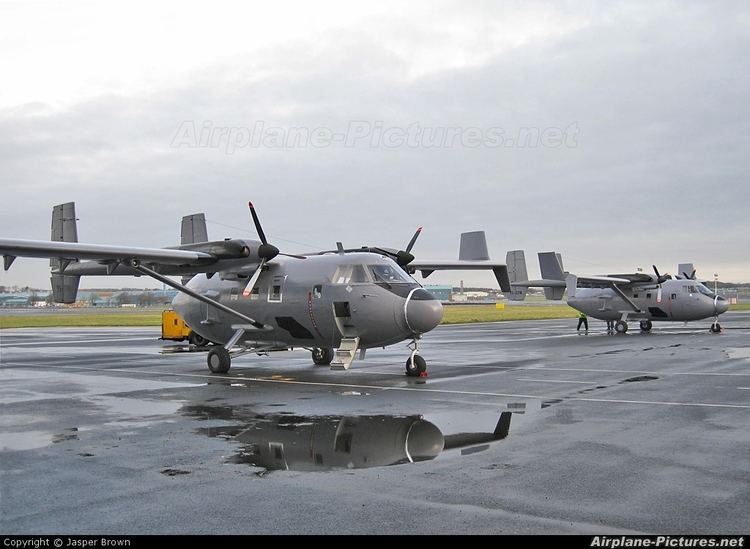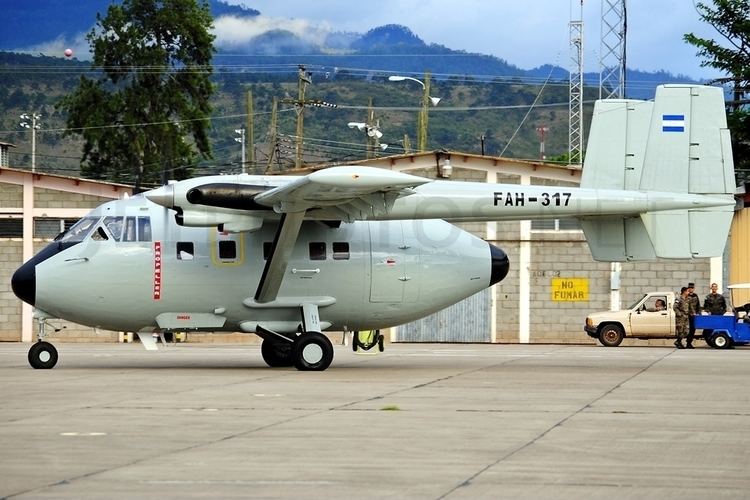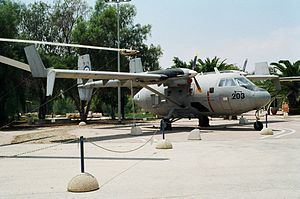Top speed 326 km/h Length 13 m | Wingspan 21 m First flight November 27, 1969 | |
 | ||
Manufacturer | ||
Iai arava inaguration ceremony
The Israeli Aircraft Industries Arava (Hebrew: עֲרָבָה, "Willow" or "Steppe" of "Desert", named after the Aravah of the Jordan Rift Valley) is a light STOL utility transport aircraft built in Israel by IAI in the late 1960s.
Contents
- Iai arava inaguration ceremony
- Design and development
- Variants
- Operators
- Specifications IAI 201
- References

The Arava was IAI's first major aircraft design to enter production. It was intended both for the military and civil market, but the aircraft was only built in relatively small numbers. The customers were found mainly in third world countries, especially in Central and South America as well as Swaziland and Thailand.

Design and development

The design work on the Arava began in 1965, and the design objectives included STOL performance, the ability to operate from rough strips and carry 20 passengers or bulky payloads. To achieve this, the Arava design was of a relatively unusual configuration.

The Arava's fuselage was barrel-like, short but wide, and the rear of the fuselage was hinged and could swing open for easy loading and unloading. Its wingspan was long and the twin tails were mounted on booms that ran from the engine nacelles. It was fitted with a fixed nosewheel undercarriage to save weight, while the chosen powerplant was two 715 eshp (533 kW) Pratt & Whitney Canada PT6A-27 turboprops.

The first prototype Arava made its maiden flight on November 27, 1969. The second prototype was destroyed when a wing strut experienced flutter and failed during flight testing on November 19, 1970. The third prototype flew for the first time on May 8, 1971. Three aircraft were commandeered for use by Squadron 122 in the Yom Kippur War, but were returned afterwards. The Israeli Air Force did not purchase the aircraft until 1983, when nine aircraft were bought. Production ended in 1988. 103 aircraft were produced, including 70 for the military market. The IAF decided in 2004 to retire the aircraft. It is still in operation in some countries.
Variants
The military version could also be equipped with a range of weapons, in order to act in anti-submarine- or gunship roles. The weapon configuration could include two machine guns in fuselage side packs (usually 0.5" Browning), plus a third gun on the rear fuselage, and two pods containing 6 x 82 mm rocket pods or torpedoes or sonar buoys on the fuselage sides.
Another less known military version is the 202B Electronic warfare model. This version was made in small numbers, and had distinct large radomes at each end of the fuselage. The radomes contained the Electronic Warfare mission systems.
Operators
Specifications (IAI 201)
Data from Jane's All The World's Aircraft 1982-83.
General characteristics
Performance
